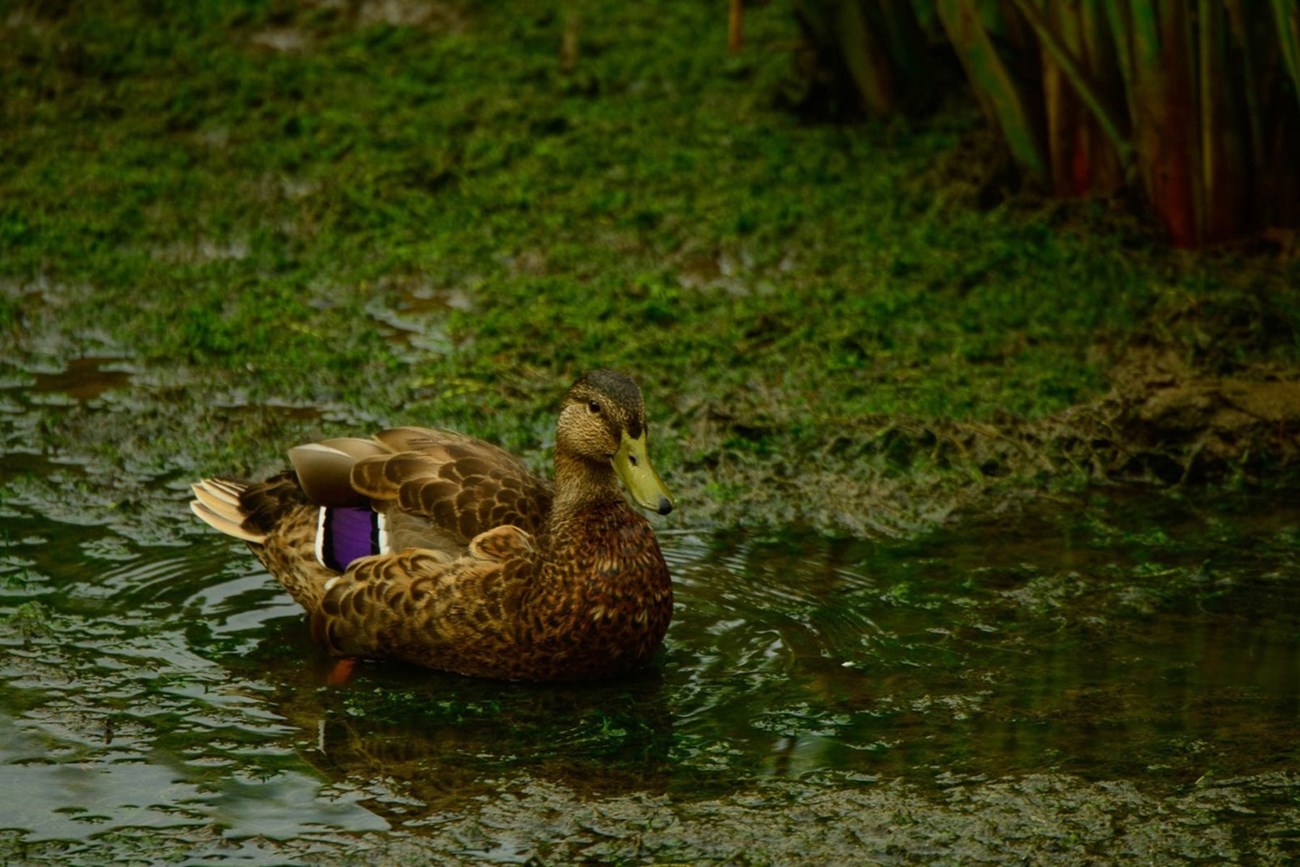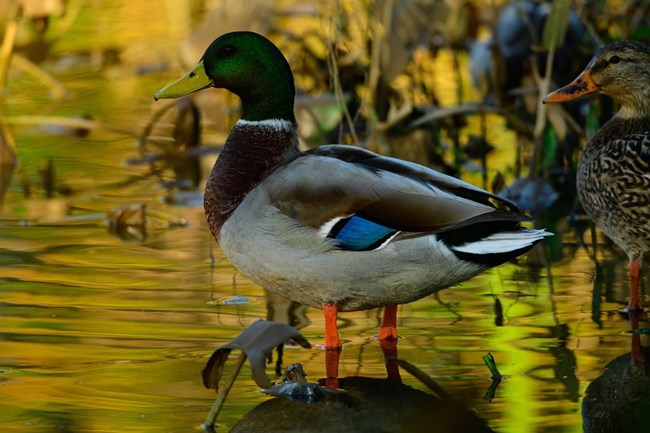
Tim Ervin Mallards can be found in the Anacostia Watershed all year long. You can often see a mother and their ducklings in the spring. The male and female mallard differ greatly in their look.
This bird species has significant sexual dimorphism between adult sexes. Female Mallards are brown with orange feet and a patch on the wings called a speculum. The speculum is both purple and white. Males will also have this appearance until they reach sexual maturity. An adult male has a distinctive green head and yellow bill. They also have orange feet, but their speculum has a patch of blue rather than purple. Mallards weigh anywhere from 1000-3,000g and have a wingspan between 32-37in. Mallards can live anywhere if they are near a large pool of water. They can survive in great numbers in developed areas because of the large availability of food sources. Mallards have an immense range and live on four continents across the world. These include North America, Europe, Africa and Asia. In the United States, it is common for a population to remain in an area year-round. A population of Mallards in Canada or Russia will migrate south for a warmer climate. Mallards have the “Least Concern” status by the IUCN. They have an estimated population of 19 million individuals worldwide. Female mallards can have up to 13 eggs per clutch. They lay a clutch of eggs 1 to 2 times per year. Their breeding season begins in the fall. Females will nest on the ground and burrow into the dirt to lay eggs. Mallards are omnivores. Vegetation and seeds are a large part of their diet. On occasion, they will eat small animals such as insects and crustaceans. Mallards have the role of secondary consumers since they will eat other animals occasionally. 
Tim Ervin Scientific Name: Anas platyrhynchos Kingdom: Animalia Phylum: Chordata Class: Aves Order: Anseriformes Family: Anatidae Genus: Anas Species: Anas platyrhynchos |
Last updated: February 26, 2023
